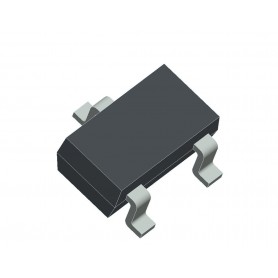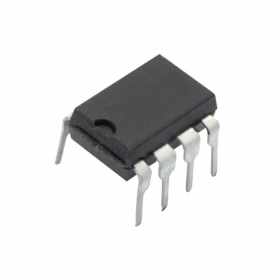
Introduction
The TVP5160 device is a high quality, digital video decoder that digitizes and decodes all popular baseband analog video formats into digital component video. The TVP5160 decoder supports the A/D conversion of component YPbPr and RGB (SCART) signals, as well as the A/D conversion and decoding of NTSC, PAL, and SECAM composite and S-Video into component YCbCr. Additionally, component progressive signals can be digitized. The chip includes two 11-bit, 60-MSPS, A/D converters (ADCs). Prior to each ADC, each analog channel contains an analog circuit, which clamps the input to a reference voltage and applies a programmable gain and offset. A total of 12 video input terminals can be configured to a combination of YPbPr, RGB, CVBS, and S-Video video inputs.
Specification
Two 11-Bit 60-MSPS Analog-to-Digital (A/D) Converters With Analog Preprocessors (Clamp/AGC)
Fixed RGB-to-YUV Color Space Conversion
Robust Sync Detection for Weak and Noisy Signals as Well as VCR
Supports NTSC (J, M, 4.43), PAL (B, D, G, H, I, M, N, Nc, 60) and SECAM (B, D, G, K, K1, L) CVBS, S-Video
Supports Component Standards 480i, 576i, 480p, and 576p
Supports ITU-R BT.601 Pixel Sampling Frequencies
Supports 3D Y/C Separation, or 2D 5-Line (5H) Adaptive Comb and Chroma Trap Filter for Both PAL and NTSC Signals
Concurrent Temporal, Frame Recursive, Noise Reduction (3DNR)
IF Compensation
Line-Based Time Base Correction (TBC)
Fast Switch 4x Oversampled Input for Digital RGB Overlay Switching Between Any CVBS, S-Video, or Component Video Input
SCART 4x Oversampled Fast Switching Between Component RGB Input and CBVS Input
Analog Video Output
Chrominance Processor
Luminance Processor
Clock/Timing Processor and Power-Down Control
Output Formatter Supports Both ITU-R BT.656 (Embedded Syncs) and ITU-R BT.601 (4:2:2 With Discrete Syncs)
I2C Host Port Interface
VBI Data Processor
"Blue" Screen (Programmable Color) Output
Macrovision™ Copy Protection Detection Circuit (Types 1, 2, and 3) on Both Interlaced and Progressive Signals

 |
-
عرفان عقیلی | 4 ماه پیش سلام میشه با اردونو یا esp32 راش انداخت و اگر که میشه کتابخانه معرفی کنید لطفا و اینکه میتونه ویدیو دوربین هایی که در همین سایت هست را پردازش کنه اونم معرفی کنید
-
پشتیبانی | 4 ماه پیش برای دریافت پاسخ سریع و جامع در مورد سوالات علمی و فنی خواهشمند است به انجمن های تخصصی برق و الکترونیک ECA مراجعه فرمایید. (https://forum.eca.ir)
-













